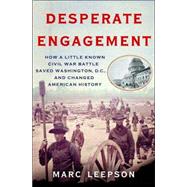
| The river with many bends | p. 5 |
| Grant's grand campaign to end the war | p. 13 |
| Lee's "bad old man" | p. 23 |
| A plan of great boldness | p. 33 |
| Early's march to the Potomac | p. 47 |
| Wallace at the bottom | p. 63 |
| An invasion of a pretty formidable character | p. 73 |
| The best little battle of the war | p. 85 |
| The whiz of flying iron | p. 97 |
| Short, decisive, and bloody | p. 111 |
| Aftermath | p. 121 |
| Great alarm in Baltimore and Washington | p. 133 |
| Sunday, July 10 : a strange Sabbath Day | p. 145 |
| Monday, July 11 : greatly in need of privates | p. 157 |
| Monday, July 11 : a desperate engagement | p. 173 |
| Heavens hung in black | p. 187 |
| Scared as blue as hell's brimstone | p. 199 |
| An egregious blunder | p. 205 |
| The verdict | p. 211 |
| Union order of battle : the battle of Monocacy, July 9,1864 | p. 237 |
| Confederate order of battle : the battle of Monocacy, July 9, 1864 | p. 239 |
| Table of Contents provided by Blackwell. All Rights Reserved. |
The New copy of this book will include any supplemental materials advertised. Please check the title of the book to determine if it should include any access cards, study guides, lab manuals, CDs, etc.
The Used, Rental and eBook copies of this book are not guaranteed to include any supplemental materials. Typically, only the book itself is included. This is true even if the title states it includes any access cards, study guides, lab manuals, CDs, etc.
Excerpted from Desperate Engagement: How a Little-Known Civil War Battle Saved Washington, D. C. , and Changed the Course of American History by Marc Leepson
All rights reserved by the original copyright owners. Excerpts are provided for display purposes only and may not be reproduced, reprinted or distributed without the written permission of the publisher.